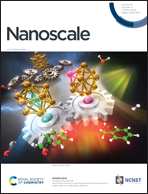Nano-PROTACs: state of the art and perspectives
Abstract
PROteolysis TArgeting Chimeras (PROTACs), as a recently identified technique in the field of new drug development, provide new concepts for disease treatment and are expected to revolutionize drug discovery. With high specificity and flexibility, PROTACs serve as an innovative research tool to target and degrade disease-relevant proteins that are not currently pharmaceutically vulnerable to eliminating their functions by hijacking the ubiquitin–proteasome system. To date, PROTACs still face the challenges of low solubility, poor permeability, off-target effects, and metabolic instability. The combination of nanotechnology and PROTACs has been explored to enhance the in vivo performance of PROTACs regarding overcoming these challenging hurdles. In this review, we summarize the latest advancements in the building-block design of PROTAC prodrug nanoparticles and provide an overview of existing/potential delivery systems and loading approaches for PROTAC drugs. Furthermore, we discuss the current status and prospects of the split-and-mix approach for PROTAC drug optimization. Additionally, the advantages and translational potentials of carrier-free nano-PROTACs and their combinational therapeutic effects are highlighted. This review aims to foster a deeper understanding of this rapidly evolving field and facilitate the progress of nano-PROTACs that will continue to push the boundaries of achieving selectivity and controlled release of PROTAC drugs.

- This article is part of the themed collections: Recent Review Articles, Nanoscale 2024 Emerging Investigators and Nanoscale Most Popular 2024 Articles


 Please wait while we load your content...
Please wait while we load your content...